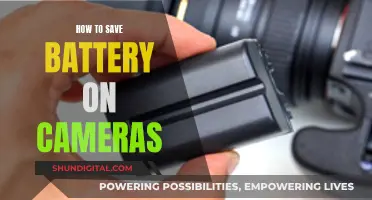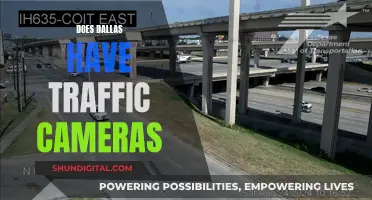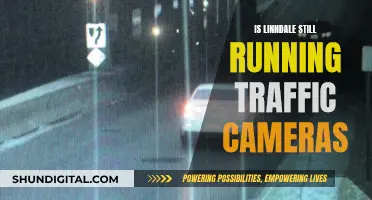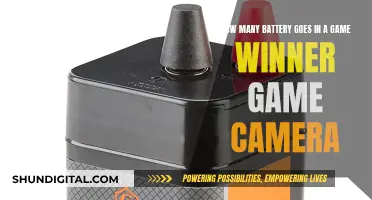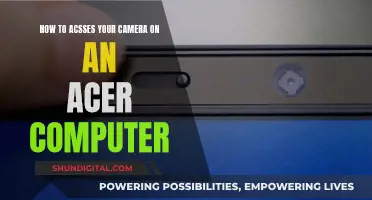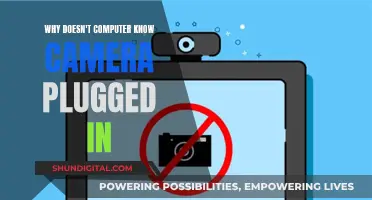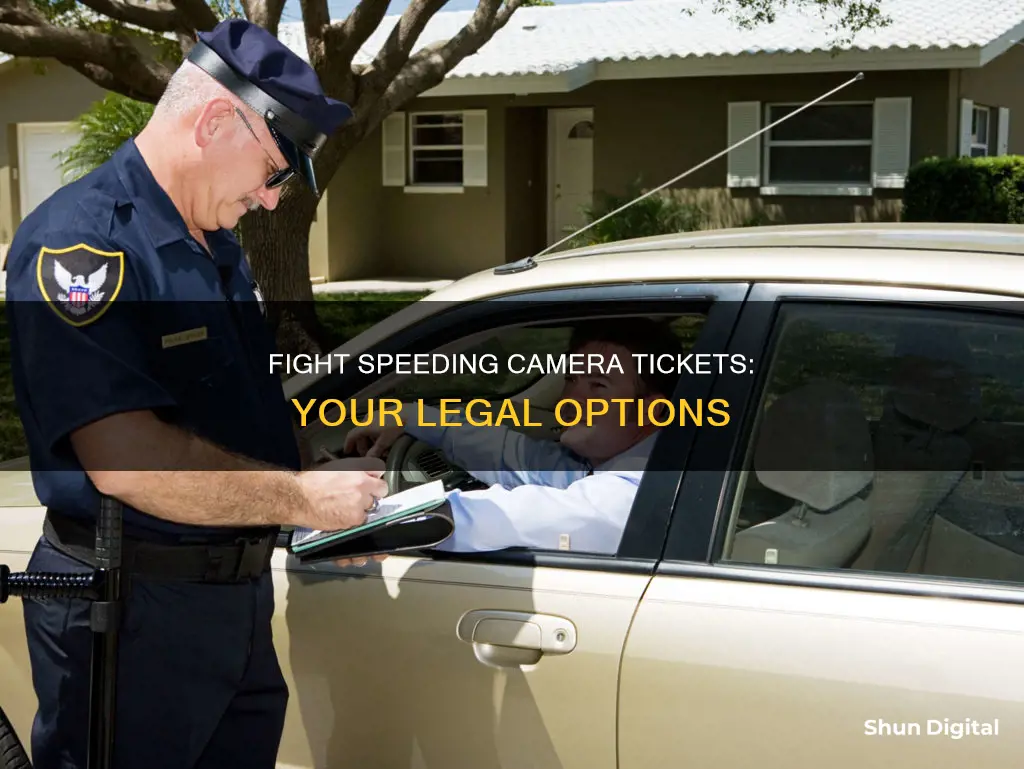
If you've received a speeding ticket, you may want to contest it. This is especially true if you believe you weren't speeding, or if you believe the fine is too high. The first step is to not pay the fine. Once you've paid, you can no longer contest the ticket. You can then contest the ticket virtually, online, by mail, or in person. You'll need to submit a statement and any evidence to support your case. An attorney may be able to help you contest the ticket and can appear on your behalf.
What You'll Learn

Plead not guilty and request a hearing
If you want to dispute a speeding ticket, you must plead not guilty and request a hearing. This is how you do it:
Plead Not Guilty
Firstly, you must plead not guilty if you want to dispute the ticket. Check your citation and make sure you plead not guilty before the deadline, which is typically within 30 days of receiving the ticket. In some jurisdictions, paying the fine is considered an admission of guilt, so do not pay the fine if you want to contest the ticket.
Request a Hearing
You may be able to request a hearing by mail or online, but if not, you will need to appear in traffic court and request a hearing in person. This initial appearance may be called a first appearance, arraignment, or notice hearing, depending on your jurisdiction. When you request a hearing, you may also be required to attend other hearings such as a pre-trial hearing or mediation.
The Kodak Camera: A Revolutionary Snapshot of History
You may want to see also

Research the law and build a defence
To build a defence for a speeding camera ticket, you must first examine the ticket and the associated photographs. Check the date, time, and location of the ticket. Make sure you were actually driving the car when the ticket was issued. If someone else borrowed your car, you cannot be prosecuted. Try to reconstruct the scene and write down any details you remember. For example, you may have been making a legal right turn on red when the camera took the photo.
Make note of the exact code section you're cited for violating. Read the law and make sure you understand both its elements and the associated penalties. Remember, it is the prosecution's burden to prove each element of your violation – it's not your responsibility to prove that you didn't do it.
If the notification you received included photos, review them to confirm that it is your car in the photo, and that the photo is clear. If the license plate isn't clearly visible, it may be difficult to confirm that the car is yours. If there's no clearly identifiable photo of you in the driver's seat, you can argue that the prosecution can't prove you were driving.
Research cases in your city or county about traffic cameras, and see if any appellate court decisions have ruled on the legality of traffic camera tickets. Aside from the camera itself, there may be other defences that are recognised by law. For example, some states have specific rules about where warning signs must be posted for cameras. If the warning signs were obscured or not present, you would have a defence. Some states also recognise a necessity defence for speeding.
Fight Camera Speeding Tickets in Georgia: Your Rights, Options
You may want to see also

Challenge the admissibility of the photo as hearsay
Hearsay is defined as an out-of-court statement presented in court to prove the matter at hand. In this case, the photo of your car taken by the speed camera is an out-of-court "statement" that the prosecution is attempting to use to prove you violated the traffic law.
Hearsay evidence is generally inadmissible unless it fits into one of the exceptions. There are more than two dozen hearsay exceptions, and some courts have fit traffic camera photos into these exceptions, but others have not. Research your jurisdiction to find out if this objection is available to you.
For example, in Broward County, Florida, a red light camera photo is considered hearsay. However, in some jurisdictions, the court may not consider the photo as hearsay. In such cases, you can object to the use of the photographs for lack of foundation. If no one from the company that maintains the camera shows up to testify, the photo has no foundation to be admitted into evidence.
To build a case against the admissibility of the photo as hearsay, you can request the full maintenance records for the camera and the traffic light or speed monitoring system to establish that they were regularly monitored and maintained. If their accuracy wasn't tested within a short period before your ticket was issued, the photo is potentially unreliable as evidence.
Additionally, you can question the reliability of the radar readings used to determine your speed. In some states, the officer must check the calibration of the radar equipment after issuing the speeding ticket.
Lithium Batteries in Disposable Cameras: What's the Deal?
You may want to see also

Dispute the authenticity of the photo
If you want to dispute the authenticity of a speeding ticket photo, you must first review the photo to confirm that it is indeed your car in the picture. If the license plate isn't clearly visible, it may be difficult to prove that the car is yours. If there is no clearly identifiable photo of you in the driver's seat, the prosecution may not be able to prove that you were driving.
If you have a camera ticket for speeding, the officer who maintained the camera and the speed detection equipment must appear in court to testify, or else the photo has no foundation to be admitted as evidence. The prosecution must present evidence that the camera, the system connecting it to the traffic light, and the traffic light itself were all functioning properly. Without establishing this foundation, the photo is not reliable and cannot be admitted into evidence.
If the photo is clear and the judge allows it, but none of them clearly show you driving, you can argue that the prosecution cannot prove it was you driving the car.
Testing Camera Batteries: A Step-by-Step Guide
You may want to see also

Attack the lack of evidence
Attacking the lack of evidence is a crucial strategy when contesting a speeding camera ticket. Here are some steps and considerations to keep in mind:
Review the Photographic Evidence:
Examine the photos or video footage provided as evidence. If the license plate is not clearly visible, or if there is no identifiable photo of you in the driver's seat, it may be challenging to confirm that it was indeed you driving the car. This can be a strong argument in jurisdictions where the ticket must be issued to the driver, not just the registered owner of the vehicle.
Challenge the Admissibility of the Evidence:
In some jurisdictions, a red light camera photo may be considered hearsay, which is an out-of-court statement used to prove the truth of the matter. Hearsay evidence is generally inadmissible unless it falls under specific exceptions. Research your jurisdiction's rules on the admissibility of such evidence.
Assert Your Right to Confront Witnesses:
The Sixth Amendment of the Constitution guarantees your right to cross-examine witnesses. Unless a witness appears who can testify about the camera system and its maintenance, you may not have the opportunity to confront the evidence effectively.
Dispute the Authenticity of the Evidence:
If no one from the company that maintains the camera testifies in court, object to the use of the photographs for lack of foundation. For speeding tickets, the company or officer who maintained the camera and speed detection equipment must appear in court to establish the reliability of the evidence. They must prove that the camera, the system connecting it to the traffic light, and the traffic light itself were functioning properly.
Highlight the Lack of Proof:
Even if the photos are clear and admissible, if none of them show you driving, the prosecution may have difficulty proving it was you behind the wheel. Additionally, the photo alone does not prove that the traffic light was functioning correctly. If the prosecution cannot establish that the traffic light was working properly, they cannot prove that you ran a red light or exceeded the speed limit.
Remember that the burden of proof lies with the prosecution, and they must prove each element of the violation. By attacking the lack of evidence, you can raise reasonable doubt and potentially get your speeding camera ticket dismissed.
Charging the Heimvision Camera: A Step-by-Step Guide
You may want to see also
Frequently asked questions
Do not pay the fine. In some jurisdictions, paying the fine is considered an admission of guilt. Instead, you must either plead not guilty or request a DMV administrative hearing to contest the ticket.
You may submit a Motion for Reconsideration within 30 days of the decision.
You can argue that the photograph is too blurry to confirm that the car is yours, or that there is no clearly identifiable photo of you in the driver's seat. If you were making a legal maneuver, such as a legal right turn on red, you should be able to get the ticket dismissed. You can also argue that the camera or speed detection equipment was not functioning properly, or that the speed limit sign was obscured or not present.
It depends on the jurisdiction. In some places, you can simply ignore a red-light camera ticket without penalty. However, in other places, you may be required to either pay the fine or contest the ticket.


